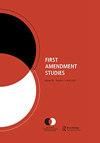数字诽谤:在诽谤诉讼中使用民意调查
Q2 Social Sciences
引用次数: 0
摘要
经过艰难的开始,民意测验在20世纪的各个领域变得无处不在。然而,直到20世纪50年代初,法院普遍拒绝接受民意调查和其他社会科学证据,理由是它们是道听途说。但是,虽然社会科学家以各种方式理解声誉,但法律将个人的声誉视为一种社会现象。这使得他人的意见成为诽谤法律主张的固有组成部分,而民意调查在此类案件中是一种明显的证据类型。但在诽谤案件中使用民意调查证据仍然很少见。本文考察了法院在诽谤案件中接受民意调查数据作为证据的情况,包括将其用作证据的实际案件,并就诽谤诉讼人和审理诽谤案件的法院如何使用此类证据提出建议。本文章由计算机程序翻译,如有差异,请以英文原文为准。
Libel by the numbers: The use of public opinion polls in defamation lawsuits
Abstract After a rocky start, polls became ubiquitous in the twentieth century in a variety of fields. However, the courts generally resisted accepting polls and other social science evidence until the early 1950s, on the grounds that they were hearsay. But while social scientists understand reputation in a variety of ways, the law sees an individual’s reputation as a social phenomenon. This makes the opinions of others an inherent part of the legal claim of defamation, and polls an obvious type of evidence in such cases. But use of polling evidence in defamation cases remains rare. This article examines courts’ acceptance of polling data as evidence in defamation cases, including the actual cases in which it has been used as evidence, and concludes with recommendations on how defamation litigants and courts considering defamation cases can use such evidence.
求助全文
通过发布文献求助,成功后即可免费获取论文全文。
去求助
来源期刊

First Amendment Studies
Social Sciences-Law
自引率
0.00%
发文量
0
期刊介绍:
First Amendment Studies publishes original scholarship on all aspects of free speech and embraces the full range of critical, historical, empirical, and descriptive methodologies. First Amendment Studies welcomes scholarship addressing areas including but not limited to: • doctrinal analysis of international and national free speech law and legislation • rhetorical analysis of cases and judicial rhetoric • theoretical and cultural issues related to free speech • the role of free speech in a wide variety of contexts (e.g., organizations, popular culture, traditional and new media).
 求助内容:
求助内容: 应助结果提醒方式:
应助结果提醒方式:


